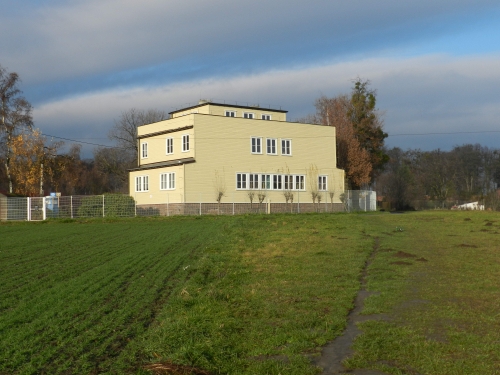SILESIAN GEOPHYSICAL OBSERVATORY IN RACIBÓRZ
The Observatory in Racibórz is one of the oldest and most unique scientific sites in the region. For nearly a century, seismic waves have been recorded within its walls. It is here that scientists collect data to better understand both the dynamics of the Earth’s interior and atmospheric processes.
HISTORY
The Observatory was established between 1926 and 1928 as part of a European network of seismological stations. Even then, Racibórz was considered a location with exceptional conditions – far from industrial activity and anthropogenic disturbances – making it an ideal place to register subtle signals from within the Earth.
The building was designed by German-Jewish architect Konrad Wachsmann, who is also known for designing Albert Einstein’s summer residence in Caputh near Potsdam. Construction of the Observatory was completed in 1928, resulting in a wooden structure built on a brick basement.
In the basement, Professor Karl Mainka installed three mechanical seismographs of his own design, which recorded seismic tremors on smoked paper and were synchronized with a pendulum clock.
After World War II, the Observatory became part of the State Geological Institute. The partially damaged seismographs were repaired, and in 1948, continuous seismic recording resumed. In 1953, the Institute of Geophysics of the Polish Academy of Sciences was founded and took over supervision of the facility. Over the following decades, the Observatory became a vital component of both national and international seismic monitoring networks.
Thanks to its location, the Observatory is also well-suited for studying aerosols and pollutant transport. In 2016, measurements of aerosol optical properties began here. In 2022, the observations were expanded to include in-situ techniques, measuring microphysical and optical parameters of aerosols at the Earth’s surface. The research makes use of a ceilometer, photometer, nephelometer, aethalometer, and particle size spectrometers. Basic meteorological measurements and UV radiation monitoring are also conducted.
The Observatory is part of the European research infrastructure ACTRIS.

WHAT WE DO?
- We monitor the microphysical and optical properties of atmospheric aerosols
- We conduct seismic activity monitoring
- We collaborate with international scientific institutions and security services
- We organize educational workshops to introduce the public to the world of geophysics and seismology
FOR SHOOLS AND THE CURIOUS
The Observatory occasionally hosts educational workshops where participants can learn more about the history of the station and its instruments, explore how a seismograph works, and discover the origins of earthquakes.
CONTACT
Geophysical Observatory in Racibórz
Chłopska 1, Str.
47-400 Racibórz, Poland
Details of the location of the recording equipment
Name: Racibórz
Abbreviation: RAC
Latitude: 50.0837N
Longitude: 18.1917E
Altitude: 215 [m]
Depth of location: 1.5 [m]
Seismometer type: SKD (Kirnos long period),
SM-3 (short period)
Data acquisition system type: MK5
Data format: miniseed, mss


